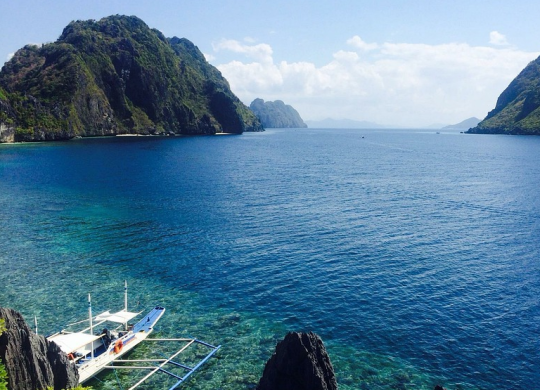Medicine and healthcare system in the Philippines: the best hospitals, medical services

The Philippines is an island country with beautiful nature, snow-white beaches, and an azure sea. A large number of tourists come to the Philippines not only for recreation but also for medical services. This is due to low prices for aesthetic and dental services.
About the level of medicine in the Philippines is quite difficult to judge unequivocally - on the one hand, a large part of the local population living in rural areas of the country lives below the poverty line and often does not have an opportunity to seek qualified medical help. On the other hand, many private clinics in the Philippines have JCI accreditation, which is a guarantee that all services rendered at these medical facilities are of high quality and range. Private clinics account for three-quarters of all medical facilities in the country.
Peculiarities of the healthcare system in the Philippines
Health care in the Philippines is divided into private, public, and barangay health centers. Health services are overseen by local government units and private sector agencies, both of which are responsible for providing health services to the community.
The country has social health insurance, which applies to working-class citizens and their families. It implies benefits for a certain list of medical services. However, the quality of medical services in public hospitals is often only up to the level of first aid.
It is quite expensive for the local population to go to private clinics and the purchase of medicines is not financially possible. Therefore, Filipinos prefer to turn to folk medicine. In the Philippines, especially in rural areas, sellers of medicinal potions and tinctures are especially popular.
There is a high level of medical services in medical centers in large cities. They are equipped with the best European equipment for performing operations of any complexity and other medical services as well as highly skilled professionals capable of providing these services. Private hospitals located in the National Capital Region or the Manila metropolitan area cater to medical tourists and offer the best medical infrastructure and luxurious five-star accommodation to the standards of the best Western hospitals. 60-80% of medical professionals in the Philippines have studied or interned abroad and hold foreign medical degrees. Moreover, Filipinos are the second-largest group of foreign students studying medicine in the United States. Many of these professionals return home, where they use the latest technology, techniques, and innovations in their work, building a world-class healthcare system.
Top Hospitals for Medical Tourism in the Philippines
• Cardiology Center of the Philippines - Quezon City
Founded in 1975, the Cardiology Center of the Philippines is considered one of the most active centers for heart disease and cardiovascular surgery in the Asia-Pacific region.
• Asian Hospital and Medical Center - Muntinlupa
The Asian Hospital is the first major private medical facility in the southern Manila metropolitan area. It offers world-class treatment and has state-of-the-art facilities and serves local and international patients who require procedures in cardiology, cosmetic surgery, dermatology, physical examination, oncology, general surgery, urology, etc.
• St. Luke's Medical Center - Quezon City/Bonifacio-Global City-Fort
St. Luke's Medical Center is the second JCI-accredited medical facility in the Philippines. The medical center offers state-of-the-art facilities and innovative patient care technologies.
• Manila Doctors Hospital - Ermita, Manila
Established in 1956, this ISO-certified medical facility offers numerous medical services to local and international patients. Services offered include industrial medicine, nuclear medicine, radiology, regenerative medicine, specialized diagnostics, laboratory medicine, and other clinical services.
Medical services for foreigners
Since 2006, the Congress of the Philippines has been operating the Office of Medical Tourism under the Medical Tourism Promotion Program. The Philippines has emerged as a leader among countries providing medical tourism services. This is because medical tourists receive high-quality medical care in more than 2,000 hospitals in the country, which are staffed by highly qualified, Western-educated, and fluent in English.
There are no reciprocal health care agreements between the Philippines and several countries, and insurance policies are often invalid, their use is possible only in some resort areas and not in full. Most tourist complexes and hotels are home to small medical centers and private practitioners.
All medical services in the Philippines are provided exclusively on paid conditions. No certificate of vaccination is required to enter the country. The exception to this is if you are coming from a place where yellow fever is prevalent. Hepatitis A and B vaccinations and prophylaxis against malaria are recommended.
Recommended articles
4 min
Residence permit
3 min
Employment
Employment in the Philippines in 2024: features of the labor market and popular vacancies (updated)
The Philippines is not only a tropical travel paradise, but also a great place to live permanently. This island country can offer favorable employment conditions for foreigners. Find out more about the peculiarities of the labor market, salaries and the most popular vacancies in the Philippines in 2024
12 maj. 2024
More details5 min
Treatment
2 min
Treatment
Health insurance and healthcare system in the Netherlands: complete guide for expats
Health insurance in the Netherlands is one of the first and most important formalities after moving, which determines access to doctors, treatment, tests and medical services in the country. Find out how to apply for a policy, when to register, how much insurance costs, how a family doctor works and much more useful information for foreigners abroad
01 gru. 2025
More detailsAll materials and articles are owned by VisitWorld.Today and are protected by international intellectual property regulations. When using materials, approval from VisitWorld.Today is required.